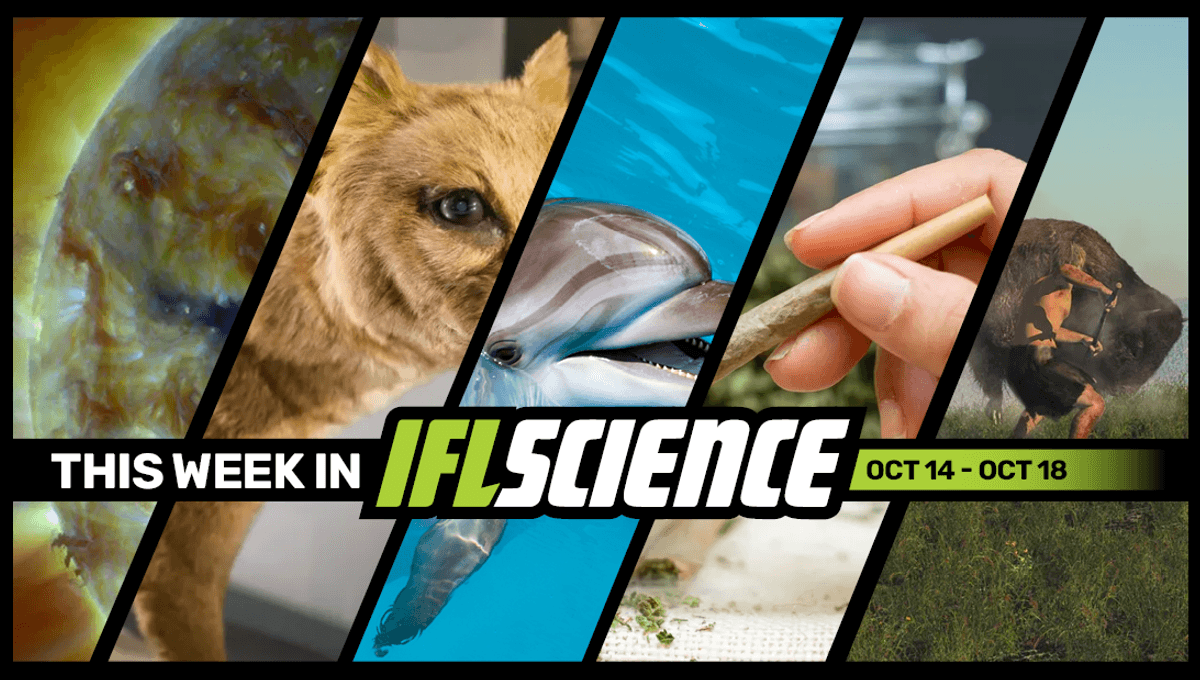
This week, the most complete thylacine genome yet has been reconstructed in a push for de-extinction, high-THC cannabis leaves a unique signature on users’ DNA, and gravity may be to blame for Neanderthals never adopting advanced spear-throwing technology. Finally, here’s what to know about the common eye condition, astigmatism.
Subscribe to the IFLScience newsletter for all the biggest science news delivered straight to your inbox every Wednesday and Saturday.
Expect Geomagnetic Storms And Aurora: The Sun Has Reached Solar Maximum, NASA Announces
Solar activity increases and decreases over the 11-year solar cycle – also known as the Schwabe cycle – now, NASA has announced that the Sun has reached its solar maximum period in the solar cycle, with more geomagnetic storms and aurora expected in the coming months. Read the full story here
Most Complete Thylacine Genome Yet Reconstructed In Push For De-Extinction, Company Claims
Scientists claim to have pieced together the most complete genome of a Tasmanian tiger to date – with the help of RNA from a head that’s been preserved in alcohol for over a century. The potential breakthrough is the latest chapter in an effort by Colossal Biosciences and the University of Melbourne’s Thylacine Integrated Genetic Restoration Research (TIGRR) Lab to resurrect the extinct animal, also known as a thylacine. Read the full story here
Microplastics Detected in Wild Dolphin Breath For The First Time
Microplastics seem to be everywhere in 2024, with new studies revealing the tiny contaminants in human brains, penises, and even human placentas. Now, new research has looked at the impact of microplastics on free-ranging dolphins in the USA and has found that even these intelligent cetaceans are not able to escape, with their breath found to contain microscopic plastic fragments. Read the full story here
High-THC Cannabis Leaves A Unique Signature On Users’ DNA
High-potency cannabis alters users’ DNA in ways that weaker strains don’t, new research has revealed. In particular, ultra-strong weed appears to interfere with genes related to immunity and cellular energy production, and leaves a distinct mark on the DNA of cannabis users who go on to develop psychosis. Read the full story here
Neanderthals Never Adopted Advanced Spear Throwing Technology. Might Gravity Be To Blame?
Spears work better when thrown from a height, but a surprising study finds the same does not apply to weapons launched from an atlatl (spear thrower). This could explain the apparent non-adoption of throwing devices by Neanderthals. Although there is nowhere near enough evidence to adopt such a conclusion with confidence, it’s possible that such a failure may have placed Neanderthals at a disadvantage in competing with Homo sapiens. Read the full story here
TWIS is published weekly on our Linkedin page, join us there for even more content.
Feature of the week:
Astigmatism: Here’s What To Know About This Common Eye Condition
You might’ve guessed already from the title (or hearing the term bandied about in an optometrist’s office), but astigmatism is an eye problem that leads those with it to have symptoms including blurry vision – you’ve probably heard of it, you might even have it, but what does it actually mean? Let’s find out. Read the full story here
More content:
Have you seen our e-magazine, CURIOUS? Issue 27 October 2024 is available now. This month we asked, “Why Do We Have Phobias?” – check it out for exclusive interviews, book excerpts, long reads, and more.
PLUS, the We Have Questions podcast – an audio version of our coveted CURIOUS e-magazine column – has begun. In episode 1, we ask “How Do Sunken Cities End Up Underwater?”
Season 4 of IFLScience’s The Big Questions podcast continues. So far, we’ve asked:
Source Link: The Sun Has Reached Solar Maximum, Microplastics Detected in Wild Dolphin Breath, And Much More This Week